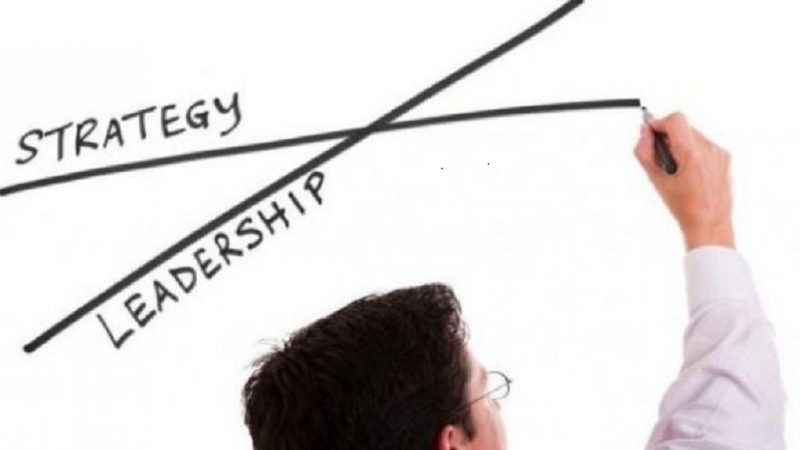Titles don’t make leaders. Neither does giving directions.
You don’t need to be heading an organization to lead. Strong leaders are highly revered and needed at every level of business. In fact, some of the most popular business leaders don’t come from supervisory, but from nooks and corners where they move teams and individuals (sometimes even better than managers). What’s their secret?
The business world has seen a variety of leaders – from Zuckerberg with his boyish earnestness and blunt Bill Gates to Satya Nadella known for his empathic leadership. There has been a proven correlation between leadership development and high performance in organizations (see McKinsey report on Developing Leadership Capabilities). As organizations make leadership development a central part of their business strategy, here’s to explore the common threads and personality traits between successful strategic leaders.
Strategy Leadership: Common personality traits
While there have been many with operational expertise and ability to maintain the status quo, a PwC 2015 study revealed there is a massive shortfall of “strategic leaders” who can lead the transformation. Effective leaders are those who change present for a better future, keeping the good aspects from the past in place. Among the respondents in the study who were asked open-ended questions to gauge their leadership style,
Only 8% of 6,000 senior executives displayed characteristics of strategic leaders.
Strategy leadership is all about creating that environment and developing a pipeline of effective leaders to strengthen the overall leadership system. Such strategic leaders bring these common personality traits to the table:
- Their actions are driven from a deeply held humility and respect for others;
- They challenge prevailing environ without provoking cynicism or outrage;
- They keep an eye on the big as well as small picture;
- They correct themselves when the chosen path turns out to be ineffective; and
- They lead with inquiry and advocacy; engagement as well as command.
How do these traits translate into principles when leading a workplace?
Four Successful Leadership Practices
- Great leaders are adherent to continuous development that creates clarity.
Setting direction is one of the first and prime reasons people look up to a leader. The team then can trudge the path. It’s when the road isn’t clear or the environment is too chaotic a strategy leadership is needed. Great leaders bring semblance in such a situation with their past experiences and acquired industry wisdom. This process requires operating with breakneck speed, and a dedication to continuous learning becomes their weapon. That means learning about new things, planning, and keeping themselves updated with all the latest happenings.
- Great leaders get their teams aligned and create energy.
Bringing ducks in the row and keeping their energies on the level-top is another critical practice adopted by great leaders. Business strategy frameworks and mavens of the likes of Satya Nadella says it requires learning skills to be an effective leader and inspiring followers.
As it’s said, “(Organizational) Development is the development of your team.”
Strategic leaders understand that. A part of strategy leadership entails employing the approach of developing partnerships with employees or decentralizing leadership that allows for a more independent approach by employees.
- Great leaders create success and know when to take a step back.
They don’t leave the execution on the team, but neither do they interfere too much. Leadership requires removing the roadblocks and making sure a storm doesn’t slow your ship down.
When the team is getting the work done, the leader becomes the least important member. They take that time to make sure no impediment blocks their road – if that means taking out the trash or picking up a pizza, then be it.
- Great leaders think strategically and ACT ON IT!
Business strategy frameworks show strategic thinking requires taking a broad and long-range approach to a problem and then making the decision that’s action-oriented involving objective analysis, measurable outcomes, and planning. Experienced leaders are aware of the stakes involved in these decisions. They don’t just think differently but make an actionable plan, and most importantly, act on it.
While they do this, they create an environment where the team feels safe to try new things and learn. A protective layer. That’s how many teams describe their strategic leaders, who are indeed doing something right.
10 Actions Strategy Leadership boils down to
Here are hard tasks that are performed by strategic leaders to be effective at the workplace.
- Distribute Responsibility. DON’T MICROMANAGE.
- Be honest and open about information.
- Create multiple paths for the generation of ideas.
- Run purposeful and fruitful meetings.
- Bring in other strategists as and when required (to review present or given in new ideas).
- Make it SAFE TO FAIL.
- Bring your whole self to work.
- Learn the art of giving constructive, specific and clear feedback.
- Develop opportunities for experiential learning.
- Hire people who can bring value and aid in transformation.
Strategy leadership requires being nimble and responsive to change.
The only key to getting through the above lists is to not only know your organizations inside out but also be well-informed about the latest developments in your industry and sector. Before your team can go out and try new things, you lead the way!













